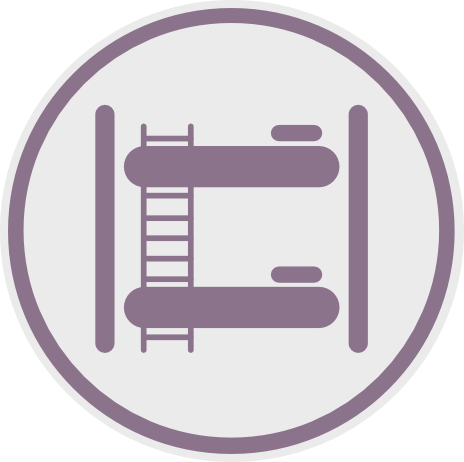
Deon Dortch
The Ultimate Guide to Bunk Beds for Kids: Safety, Styles, and Solutions
Bunk beds have long been a popular option among moms and dads looking for to enhance space in their children's bed rooms. With benefits that exceed their compact design, bunk beds offer an enjoyable and practical sleeping arrangement while encouraging brother or sister bonding and promoting creativity. In this detailed guide, we check out various aspects of bunk beds for kids, including security factors to consider, various designs available, and suggestions for picking the right one for your household.
Why Choose Bunk Beds?
Bunk beds are developed to stack one bed on top of another, utilizing vertical space to develop more space for play and storage. They are especially useful for families with numerous kids or limited bed room space. In addition, they supply a daring sleeping environment that children frequently delight in.
Secret Advantages of Bunk Beds:Space-saving style: Ideal for little rooms or shared areas.Cost-effective: Often more cost effective than buying two separate beds.Encourages social interaction: Promotes bonding among siblings or friends.Versatile options: Available in various designs and configurations to fit any space design.Security First: Essential Considerations
When choosing a bunk bed for kids, safety should be the top priority. The following features are important for making sure a safe and secure sleeping environment:
Important Safety Features:Sturdy Construction: Ensure that the bed frame is made from resilient products such as strong wood or metal.Guardrails: Bunk beds ought to have guardrails on both sides of the upper bunk to prevent falls.Ladder Safety: A strong, integrated ladder or stairs with anti-slip rungs is necessary for safe access to the top bunk.Weight Limit: Check the producer's weight limit capacity for both the top and bottom bunk.Mattress Size: Use the proper mattress size as defined by the bed maker to guarantee a tight fit within the bed frame.Safety Tips for Parents:Monitor Sleep Habits: Teach kids the significance of not using or jumping off the bunk beds.Age Appropriateness: Generally, the upper bunk is suitable for kids aged 6 and older.Routine Inspections: Periodically examine for any loose bolts, screws, or structural damage.Designs of Bunk Beds
Bunk beds come in a range of styles, allowing moms and dads to choose one that complements their child's room decoration while conference specific requirements. Below are some popular designs:
Popular Bunk Bed Styles:Traditional Bunk Beds: Simple and traditional designs made from wood or metal with no extra functions.Loft Beds: Features a raised leading bunk with space below for a desk, play area, or extra storage.L-Shaped Bunk Beds: Arranged in an L-shape, often perfect for corner spaces and can have extra storage options.Twin over Full Bunk Beds: A twin bed on leading and a bigger full-sized bed on the bottom, accommodating kids or teens of different ages.Triple Bunk Beds: Designed to fit three beds in a single footprint, perfect for bigger households or sleepovers.A Comparison of Bunk Bed StylesBunk Bed StyleDescriptionBest ForStandardTraditional design with two stacked bedsStandard bedroom setupsLoft BedRaised bed with usable space underneathResearch or play locationsL-ShapedBunk beds arranged in an L-shapeCorner areasTwin over FullTwin bed on top, complete bed belowDifferent age brother or sistersTriple BunkThree stacked bedsBig households or sleepoversPicking the Right Bunk Bed
When looking for the perfect bunk bed, think about the following aspects to guarantee you make a notified decision:
Key Factors to Consider:Room Size: Measure the space dimensions to determine the proper size and height of the bunk bed.Child's Age: Consider the age of your child(ren) when selecting a design and security functions.Performance: Think about how much storage or play space you need and whether the bunk bed should serve additional functions.Budget: Set a budget plan that consists of not just the bunk bed but also the needed bed mattress and accessories like bedding or security gates.Frequently Asked Questions About Bunk Beds for Kids1. What age is appropriate for a kid to sleep in the top bunk?
Typically, kids aged 6 and older need to be able to safely oversleep the top bunk, though you ought to constantly consider your kid's maturity level.
2. Are bunk beds safe for young children?
It is not recommended for toddlers or really young kids to oversleep the leading bunk due to the danger of falling.
3. How do I preserve the bunk bed?
Examine the bed routinely for any signs of wear and tear, tightening screws, and cleaning up the mattresses to make sure prolonged safety and durability.
4. Can I transform a bunk bed into two separate beds?
Lots of bunk beds are designed to be convertible, allowing you to separate the beds when required. Check the producer's specifications before purchasing.
5. How can I optimize space in a bunk bed space?
Use under-bed drawers, shelves, or lofted styles to produce extra storage services in a space with a bunk bed.
Bunk beds offer a wonderful mix of fun, functionality, and space-saving energy, making them a perfect choice for young households. By considering security features, numerous designs, and practical aspects such as room size and age suitability, moms and dads can pick the perfect bunk bed for their child's needs. With the ideal option, bunk beds can change a bedroom into a magical space that motivates play, creativity, and bonding among siblings. Always keep in mind to prioritize safety and maintenance to make the most of this distinct sleeping arrangement.
Made By Make My Creation
 English
English
